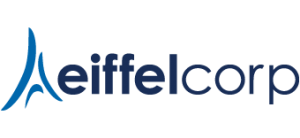The Building Blocks of Creativity and Spontaneity in Online Design
Despite many years of evolving theories and research, and the development of a wide variety of learning management systems, apps and other software, online learning design has seen very little change and innovation over the years. In the main, educational technology is used to dump face-to-face learning materials into a virtual space, usually onto a platform such as a learning management system (LMS), relegating the role of the LMS to that of a glorified document repository. Why should this be?
We need first to look to educators’ and decisionmakers’ expectations of technology. People perceive technology as something that should ‘automate’ stuff and allow us to do things in a more speedy and efficient way. Educational technology has, inadvisably, long been touted as some sort of magical panacea that will do it all for you. This creates an expectation that the technology, in and of itself is going to transform learning and teaching and magically improve results and student throughput, without any effort on the part of the teacher. When that expectation is not met, the teacher’s and other stakeholders’ trust in the technology is undermined. Technology is perceived as something that doesn’t work, is a waste of time and a gimmick. This is a story that plays out across the world on a regular basis and is, in my opinion, one of the fundamental reasons why so many learning platforms become document repositories.
There are, of course, other variables involved such as the reliability of IT infrastructure, but the fundamental reality is that a teacher who is used to teaching in a face-to-face environment is usually not equipped to move quickly and seamlessly into a blend of the face-to-face and online environment or into a fully online environment. This is a factor that is constantly overlooked in the technology acquisition process at many educational institutions. Instructors need to take a number of variables into consideration when deciding to employ technology in their classrooms. Koehler and Mishra’s Technological Pedagogical Content Knowledge (TPACK) framework provides a helpful illustration of this process.
Three factors should come into play when considering the use of technology in the classroom. A teacher who begins to move into this environment needs to a balanced blend of the following:
- Content knowledge – a teacher’s knowledge of a subject needs to be sound so that they have the ability to build a curriculum that produces students who are able to demonstrate an acceptable level of competency at the expected cognitive levels in that subject.
- Pedagogical knowledge – a teacher should have basic knowledge of a range of learning theories such as behaviorism, cognitivism, constructivism and connectivism and how their use in curriculum development can enhance a student’s access to and assimilation of the material to be taught.
- Technological Knowledge – a teacher should be comfortable with the day-to-day use of a range of technology and understand how it can be used to enhance the overall learning experience through its correct application in a particular subject field.
When these three aspects are in place and are working in concert, the transition to a virtual environment becomes much easier for the teacher. If there is a weakness in one of these elements, the resulting experience with educational technology will likely be negative for the teacher, the students and, ultimately, the institution. A balanced mix of these elements produces a teacher who is able design a curriculum that uses technology effectively in their subject field, can respond innovatively to new technological developments and is able to produce and reconfigure online learning interventions quickly and with relative ease.
(Failure to allow for professional development in any of these three spheres will result in a less than optimal experience for both the institution and their instructors but, especially more so if the pedagogical technological knowledge component is weak or missing. Eiffel Corp addresses this skills gap though its Digital Teaching and Learning series. Instructors are taken through series of three certified courses that address the theories and approaches applicable in online learning, the practical use of technology and the advanced application of the knowledge gained.)
Reference: Koehler, M. and Mishra, P., 2009. What is technological pedagogical content knowledge (TPACK)?. Contemporary issues in technology and teacher education, 9(1), pp.60-70.





Leave a Reply
Want to join the discussion?Feel free to contribute!